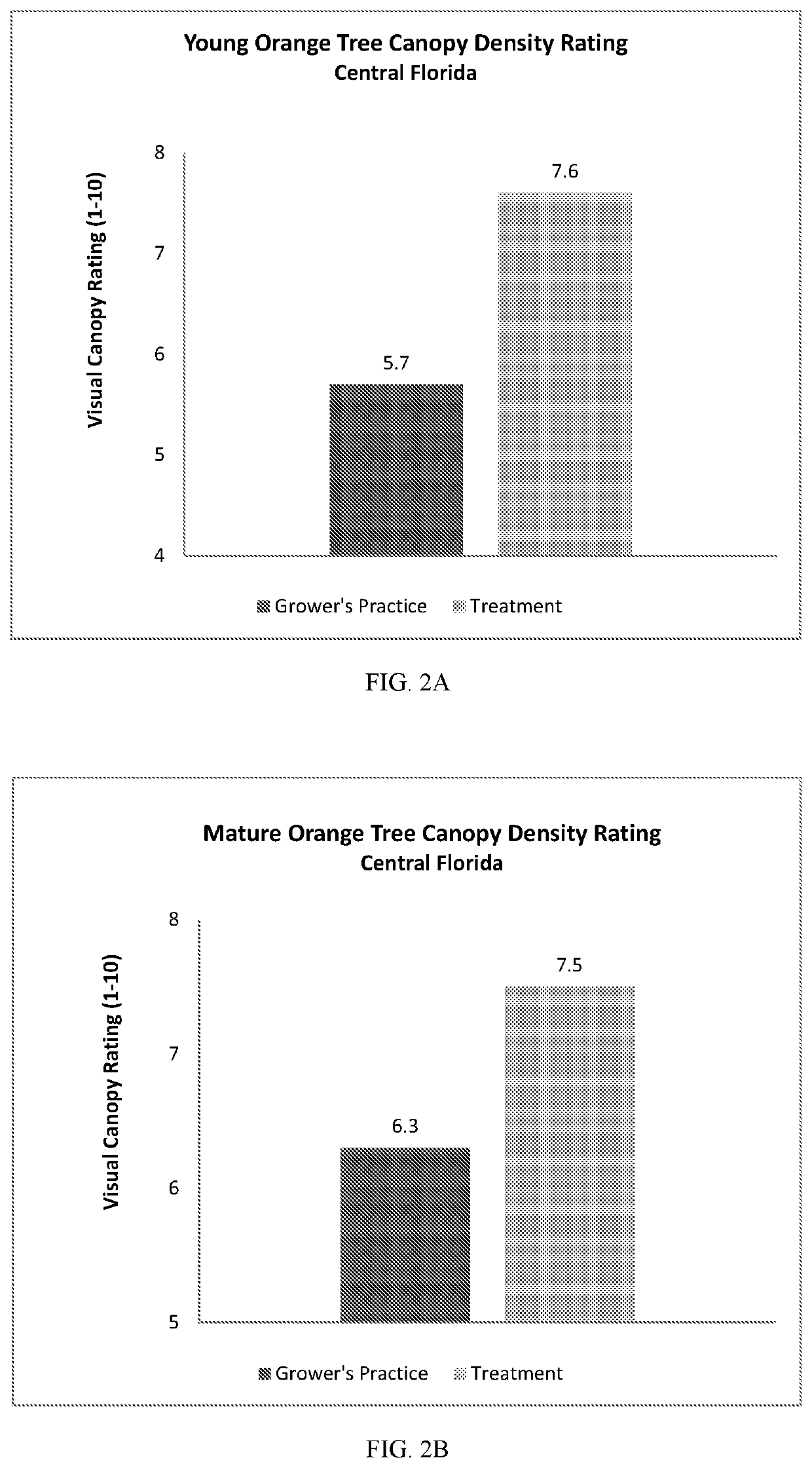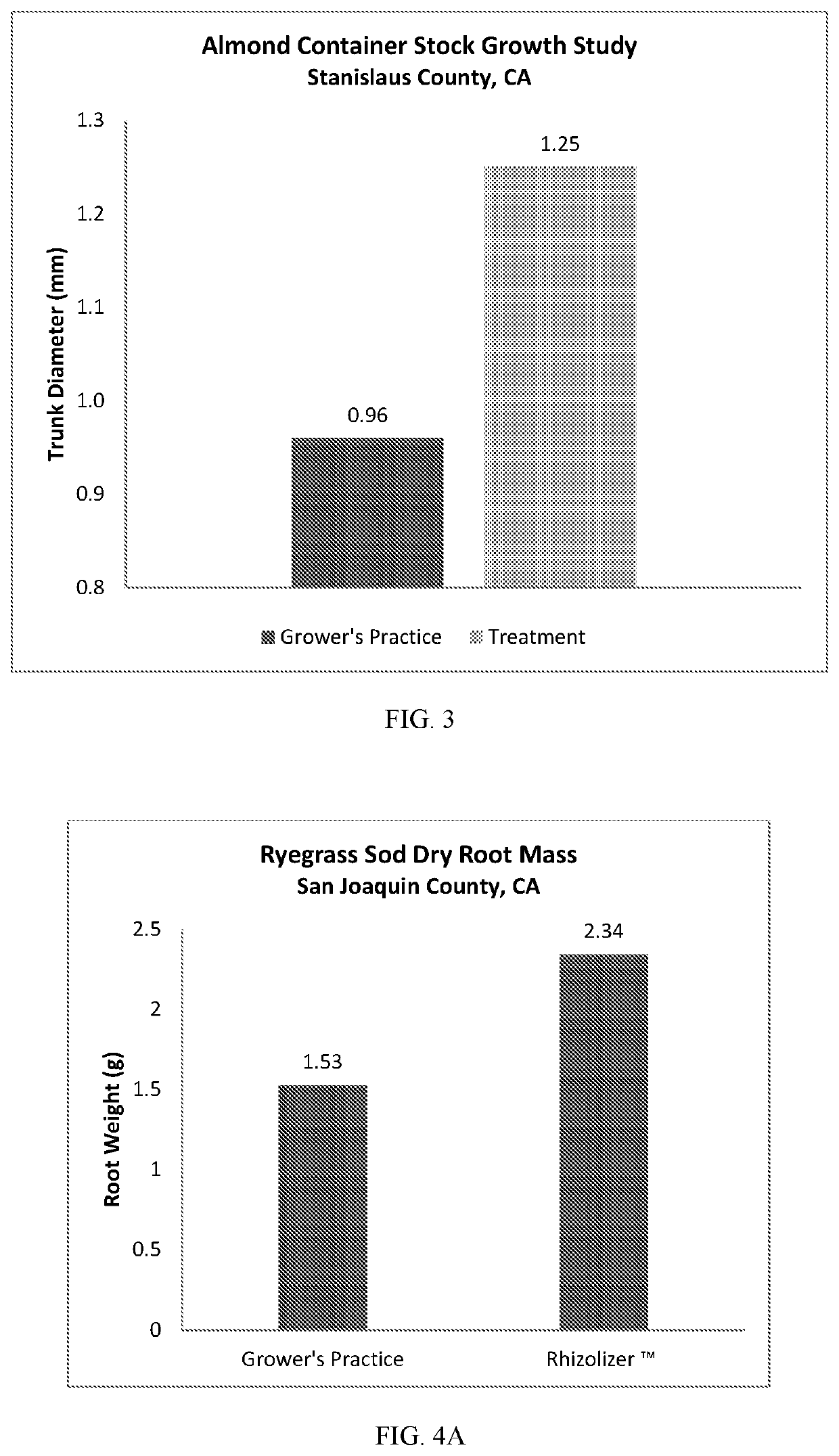Materials and Methods for Enhanced Carbon Utilization and/or Sequestration as well as Reducing Deleterious Atmospheric Gases
a technology of carbon utilization and/or sequestration, which is applied in the direction of biocide, soil conditioning composition, separation process, etc., can solve the problems of increasing nitrous oxide emissions and methane emissions, and achieve the reduction of atmospheric greenhouse gases, carbon utilization, and carbon utilization
- Summary
- Abstract
- Description
- Claims
- Application Information
AI Technical Summary
Benefits of technology
Problems solved by technology
Method used
Image
Examples
example 1
ased Composition
[0230]Exemplified herein is a composition according to certain embodiments of subject invention for use in reducing GHGs, improving carbon utilization, and / or enhancing sequestration of carbon. This example is not to be intended as limiting. Formulations comprising other species of microorganisms, either in lieu of, or in addition to, those exemplified here, may be included in the composition.
[0231]The composition comprises a microbial inoculant comprising a Trichoderma spp. fungus and a Bacillus spp. bacterium. In specific instances, the composition comprises Trichoderma harzianum and Bacillus amyloliquefaciens. Even more specifically, the strain of B. amyloliquefaciens can be B. amyloliquefaciens subsp. locus.
[0232]In one embodiment, the composition can comprise from 1 to 99% Trichoderma by weight and from 99 to 1% Bacillus by weight. In some embodiments, the cell count ratio of Trichoderma to Bacillus is about 1:9 to about 9:1, about 1:8 to about 8:1, about 1:7 t...
example 2
in Below-Ground Biomass of Citrus Trees (Root Mass)
[0248]A composition comprising Trichoderma harzianum and Bacillus amyloliquefaciens was applied three times, bi-monthly, to soil in which orange trees and grapefruit trees were growing. Root mass was measured before and after treatment and compared with untreated control trees (“Grower's Practice”).
[0249]As shown in FIGS. 1A-1B, a statistically significant difference in fibrous root biomass was achieved between untreated control trees and treated trees.
example 3
in Above-Ground Biomass of Citrus Trees (Canopy Density)
[0250]A composition comprising Trichoderma harzianum and Bacillus amyloliquefaciens was applied three times, bi-monthly, to soil in which mature orange trees and young orange trees were growing. Canopy density rating was measured before and after treatment and the increase was compared with untreated control trees (“Grower's Practice”).
[0251]As shown in FIGS. 2A-2B, a greater canopy density rating was achieved for both mature and young orange trees when compared to the rating observed in untreated control trees of the same age.
PUM
| Property | Measurement | Unit |
|---|---|---|
| Volume | aaaaa | aaaaa |
| Volume | aaaaa | aaaaa |
| Volume | aaaaa | aaaaa |
Abstract
Description
Claims
Application Information
 Login to View More
Login to View More - R&D
- Intellectual Property
- Life Sciences
- Materials
- Tech Scout
- Unparalleled Data Quality
- Higher Quality Content
- 60% Fewer Hallucinations
Browse by: Latest US Patents, China's latest patents, Technical Efficacy Thesaurus, Application Domain, Technology Topic, Popular Technical Reports.
© 2025 PatSnap. All rights reserved.Legal|Privacy policy|Modern Slavery Act Transparency Statement|Sitemap|About US| Contact US: help@patsnap.com



